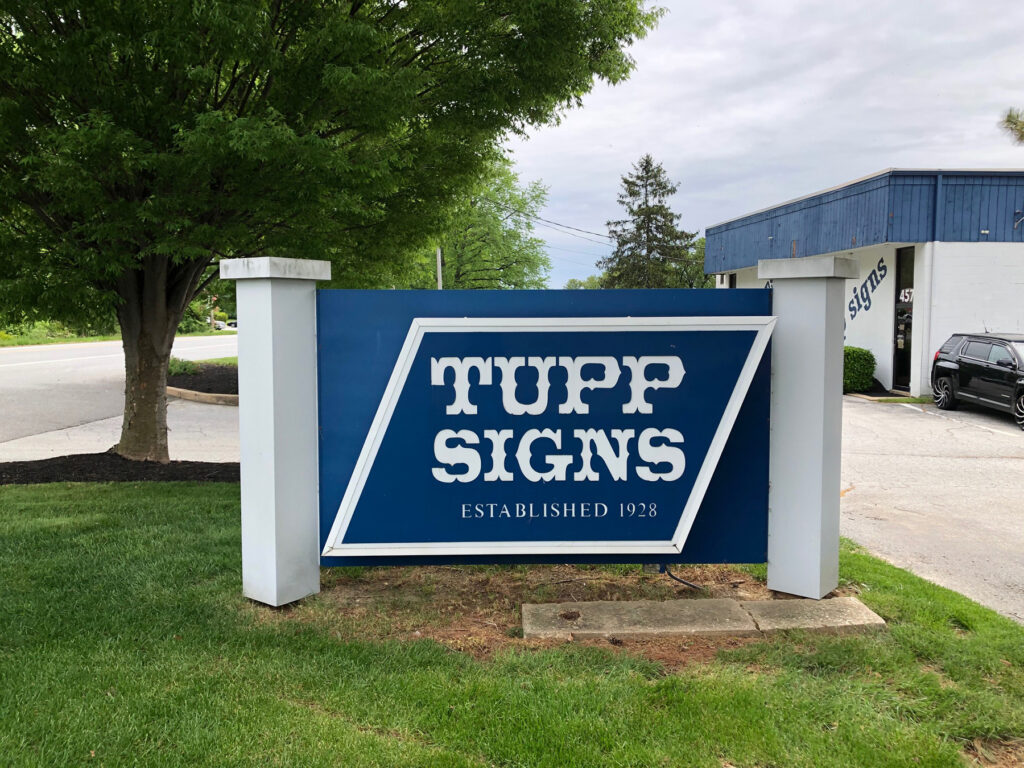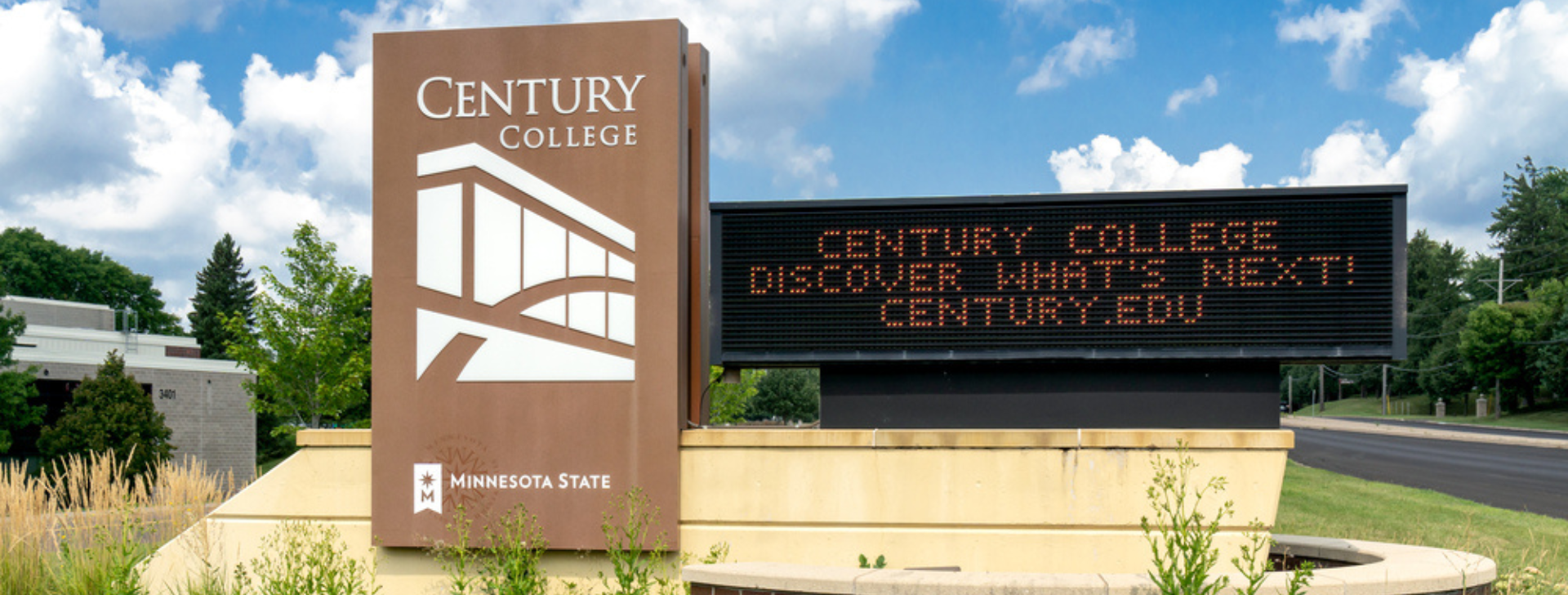Monument signs, also known as ground or low-profile signs, have become an extremely popular signage choice for countless businesses. As the name suggests, these freestanding signs sit directly at ground level rather than on tall poles or pylons. They come in a diverse range of shapes, sizes, and designs. But before deciding if a monument sign is right for your business, consider these key pros and cons.
Key Takeaways
- Monument signs offer high visibility when positioned near driveway entrances and intersections
- Rectangular shape allows ample space for branding elements like logos and lighting
- Durable materials stand up well against weathering and long-term outdoor use
- Easier permitting compared to tall pylon or pole signs
- More limited visibility range and lighting options than some signage
- Susceptible to vehicular damage and wear/tear over time
- Not always ideal for contexts like busy urban settings or highways
Monument Signs vs. Pylon Signs
| Factor | Monument Sign | Pylon Sign |
|---|---|---|
| Height | Low, at ground level | Up to 30 ft tall |
| Visibility Range | Good within 400 ft | Superior from highways |
| Branding Space | Ample rectangular area | Varies by shape/size |
| Lighting Options | Limited | Advanced e.g. LED |
| Durability | Very durable | Moderate, anchor points vulnerable |
| Cost | $$ | $$$ |
The Pros of Monument Signs
High Visibility Monument signs may not tower 20 or 30 feet into the air, but their strategic placement still allows high visibility from the road. Positioning them near intersections or driveways entering your establishment ensures they capture attention.
** SPACE FOR CREATIVITY** The flat, rectangular shape lends itself to all kinds of creative branding. Businesses have ample space to proudly display logos, establish color schemes through customized lighting, textures, and dimensional elements for a signature look.
Durable Materials Unlike taller structures requiring complex anchoring, standard monument signs sit solidly on the ground or a short concrete/brick base. This allows them to withstand all kinds of weather conditions over long periods. Higher grade materials like thick plastics, metal composites and stone last even longer.
Easier Approvals Since monument signs sit close to the ground, they clear zoning laws and local regulations around sign height and structural requirements much more easily. The permitting process tends to be faster and less expensive compared to obtaining approval for taller or unconventionally shaped signs.
The Cons of Monument Signs
Limited Visibility Range While positioning monument signs appropriately helps counter this, the visibility range is less than tall pylon or pole signs. If your business location has an unusually long driveway or entrance road, motorists may need those few additional seconds of visibility that elevated signs provide.
Limited Lighting Options Lighting helps maximize monument signs’ night and early morning visibility. However, options are much more limited compared to taller or technologically advanced signs that can support features like LED displays, digital screens and customized color arrays.
More Susceptible to Damage Vehicle accidents and vandalism unfortunately remain risks for signs located at ground level, and these occurrences can prove expensive. Some businesses opt to install protective bollards or raised concrete surrounds. But wear and tear over many years in outdoor conditions also degrade monument signs.
Not Ideal for Every Location In high density urban areas or locations set far back from the main road, the visibility benefits of monument signs diminish. Businesses situated off highways also rely more on signs placed higher up to capture traffic zipping by at 65 mph.
When weighing up the pros and cons, monument signs offer many perks if positioned well for the context of your individual business location and signage goals. They diverge quite distinctly from towering, large format pylon signs, giving companies yet another option to consider when planning their visual branding.
FAQs
How far can motorists see monument signs?
Visibility studies show legibility remains fairly clear up to 400 feet away. Positioning is vital though – signs placed perpendicular rather than parallel to traffic maximize visibility.
What maintenance do monument signs require?
Occasional inspection of lighting elements; replacement of worn materials if damage occurs. Protected locations and durable construction minimize upkeep needs.
What customization options exist?
Many! Size, shape, material textures/finishes, dimensional and landscape elements, integrated lighting schemes, and branded graphical wraps allow personalization.
Monument Sign Statistics
- Approximately 65% of small businesses use monument signage, compared to 55% adopting pylon signs
- The average cost per square foot is $300-$500 for monument signs, translating to $6,000-$10,000 for a 6 by 6 feet sign [[Source]](https:// FacilityLogix.com/monument-sign-cost-per-square-foot/)
- One study saw a 24% increase in weekly vehicle stops after a monument sign installation, underscoring their impact
At Tupp Signs, we specialize in fabricating exceptional quality monument signs with stellar durability, customized design aesthetics and incorporated lighting technology. Our experienced team would love to discuss the perfect sign solution tailored to your brand and location needs. Reach out today to get the conversation started!
Conclusion
Monument and pylon signs achieve increased visibility for businesses through contrasting approaches. Monument signs favor a low profile placement but durable build and ample space for communicating brands and identities. Carefully weigh their advantages against taller pylon signages given your location, visibility needs and budget.




